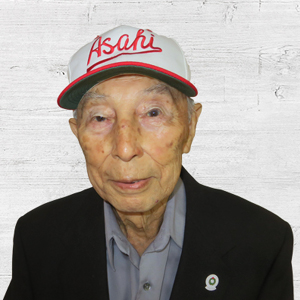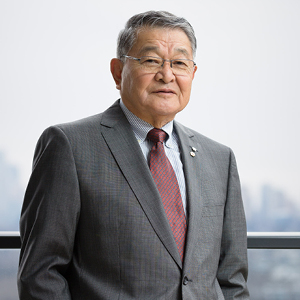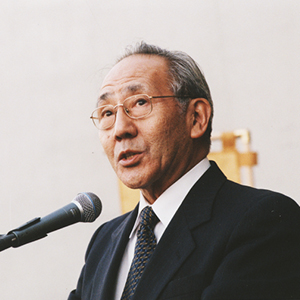Past Awardees
Thomas Shoyama Lifetime Achievement Award
2022 - Robert Banno
Robert was a Sansei, born in Tashme Internment Camp on March 9, 1943. He was the first baby to be born at Tashme. He graduated from Kamloops High School and attended the University of British Columbia, majoring in Economics and Political Science. He earned his law degree at the UBC School of Law. Robert began practicing law in 1969 and had a long and distinguished career. He served as a senior partner at DLA Piper (formerly Davis LLP) , with expertise in Canada-Japan business and trade and aboriginal law. He was also instrumental in helping to establish the Nikkei National Museum & Cultural Centre and served as its founding President. He then later founded the Nikkei Place Foundation in 2002 to support both the Nikkei National Museum & Cultural Centre and the Nikkei Seniors Health Care & Housing Society and led its fundraising efforts until his death.
As Board President of the Foundation, Robert led with integrity, humility, and with a clarity of vision. Above everything, he was an ethical, thoughtful, and honorable person. He was generous to Nikkei Place both as a philanthropist and with his time as a Board member and volunteer.
2020 - Raymond Moriyama
Born in Vancouver, British Columbia in 1929, Raymond Moriyama is an internationally renowned Japanese-Canadian architect. He has designed projects around the globe, including: Ottawa's City Hall, the Canadian Embassy in Tokyo, the Saudi Arabian National Museum, and the Canadian War Museum, among others.During the Second World War, he and his family were interned in Slocan Valley and his experiences in the camp have informed his personal and professional career. Moriyama believes that "architecture has to be humane and its intent the pursuit of true ideals, of true democracy, of equality and of inclusion of all people."
2019 - Kaye Kaminishi
Kaye Kaminishi is a role model for overcoming racial and economic discrimination. He was born in Vancouver on January 11th, 1922, and was eventually sent to Japan for school, where he first started to learn the game of baseball. He returned to Canada in 1933. He started playing baseball in the Vancouver Buddhist Church League at age thirteen. At age seventeen, he was scouted by the Vancouver Asahi baseball team as a rookie in the 1939 season, for his skills in fielding and bunting. These were prime attributes needed for their unique way of playing baseball — known as “brain ball”.The Vancouver Asahi baseball team were a symbol of the Japanese Canadian struggle for equality and respect, and were able to overcome differences for the love of the game. They were the only ethnic, non-Caucasian team to play at near professional level in several leagues in the Pacific Northwest, and won the Terminal League for three years running. Despite the team’s disbandment and internment during the Second World War, they left a legacy of inspiration for future generations of all Canadians.
Joining the Vancouver Asahi team as a third baseman, and the youngest member, was a dream come true for Kaye. The Asahi were like gods at the time, revered for their ability to compete and win despite intense discrimination. He was sometimes called the “Vacuum Cleaner”, as he scooped up the ball for throws to first base. Kaye’s baseball career did not end when the Vancouver Asahi team were disbanded. During the war, when over 22,000 Japanese Canadians were forcibly removed from the west coast of British Columbia, Kaye and his mother were sent to East Lillooet, a then-called self-supporting internment camp. There, he helped bridge community relations between the two distinct communities of East Lillooet and Lillooet through the game of baseball. He organized a softball team amongst the residents of the internment camp, and spoke with the RCMP officers to propose exhibition games between the East Lillooet softball team and Lillooet teams. These games opened up interactions between the two communities which had previously been racially divided, creating a new social and economic relationship that benefitted everyone. At the end of the war, at age twenty-five, he moved to Kamloops and played for the Kamloops CYO in the Interior League, the Okonots, and Elks in the Okanagan Valley League. His baseball career ended in 1954, and he went on to coach young players in Little League.
Aside from baseball, Kaye has also competed in the BC Senior Games in competitive level badminton for twenty years. He earned first place in men’s doubles in 1971-1980, and second place in men’s doubles at the All American Senior Games Tournament in 1995.
2018 - Joy Kogawa
An accomplished poet, playwright, and author. Joy Kogawa is celebrated for her work as a novelist and her influential contributions in the Canadian Japanese Redress Movement to obtain compensation and reparation from the Canadian government for the incarceration of Japanese Canadians during WWII.As one of Canada’s most celebrated authors, Joy is best known for her 1981 award-winning novel Obasan, which chronicles the experience of the Japanese Canadian internment during WWII from the perspective of a thirty-six year old woman who recounts her experiences as a young child. Regarded as a seminal work of literature, it is utilized in classrooms across Canada and the USA because of its successful integration of political understanding with literary artistry.
Joy became a member of the Order of Canada in 1986 and a member of the Order of British Columbia in 2006. In 2010, she received the Order of the Rising Sun from the Japanese government for her contribution to the understanding and preservation of Japanese Canadian history. She has also received numerous honorary doctorates from Canadian universities – most recently from the University of Victoria in June 2017.
2017 - Henry Wakabayashi
Henry Wakabayashi is a highly successful consulting engineer who has dedicated over 50 years to developing and improving some of BC’s most important and largest private and public sector infrastructure projects. He co-founded Pacific Liaicon in 1970, which went on to become one of the most successful management and consulting engineer companies in BC.His work includes heading the development, project management, and implementation of the Northeast Coal Development, the Vancouver Sky Train, the expansion of the Vancouver International Airport and the Metro Vancouver drinking water treatment program. He was also involved in the expansion of the Vancouver Convention Centre, and has provided senior advisory services to EXPO 86, BC Ferries, BC Transit, VANOC, 2010 Olympics, and BC Hydro Site C.
Henry has been particularly dedicated to his charitable work in the Japanese Canadian community; he was an active Vice-Chair on the Vancouver Redress Committee, and Chairman in charge of funding and construction of the Momiji Gardens (in co-ordination with the Japanese Gardeners Association and the PNE). Since the early 1990’s, he has been lending his support to both Nikkei Place and Tonari-Gumi as an ongoing supporter and fundraiser. Henry was instrumental in helping create Nikkei Place, where he headed project management of it’s design and construction, alongside Sam Yamamoto.
2016 - Gordon Kadota
Gordon Ryo Kadota was born in 1933 in New Westminster, British Columbia. At the age of seven he was taken to Japan for a visit but the outbreak of World War II prevented the return to Canada. After 12 years in Japan during and after the war, he completed high school at Kansei Gakuin University High and returned to Canada in 1952.Following a brief attempt in the forestry sector, he entered the travel business in 1961, with a major focus on promoting travel between Canada and the Pacific Rim countries.
Gordon has received numerous awards for his work in business and tourism, and the betterment of relations with Japan and Canada. Since 1955, he has been involved as a community volunteer and leader in the Japanese Canadian community, serving both at the local and national levels.
He was instrumental in the formation and served as the first President of the National Association of Japanese Canadians which spearheaded the redress movement culminating in the 1988 Acknowledgement and Redress by the Federal Government. From 1991 to 2001, he served on the Japanese Canadian Site Management Committee as a Director and the President of the National Nikkei Heritage Centre Society, the organization instrumental in building the 20 million dollar community complex Nikkei Place in Burnaby, B.C.
2015 - Arthur Hara, OC, OBC
A business leader who contributed to the betterment of community, business, education, and international trade and government through his life. He has been the recipient of international recognition and awards including the Officer of the Order of Canada (2013) and Order of the Rising Sun (Japan).Arthur has served as chairman of the Asia Pacific Foundation Canada and various other organizations while also contributing and providing guidance and wisdom to Nikkei Place.
2014 - Dr. David Suzuki
A world leader of sustainable ecology and an award winning scientist and broadcaster. A trusted public figure, dedicated to the preservation of the natural world by constantly reminding people of the role and responsibility humans play in the balance of our world’s ecological system. His work has not only related to environmental concern, but to people, their communities and their culture.







